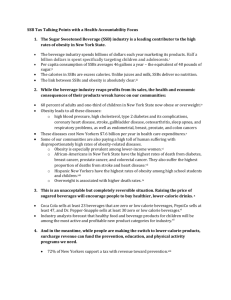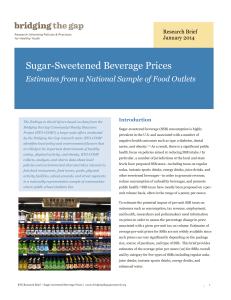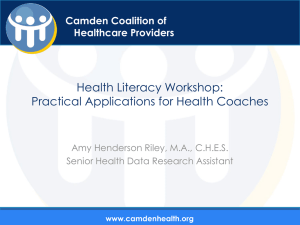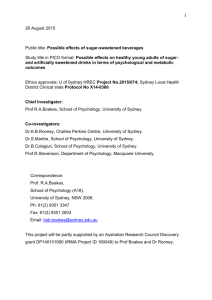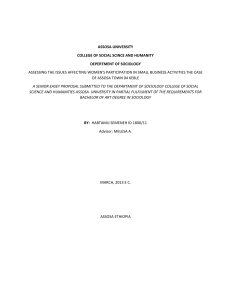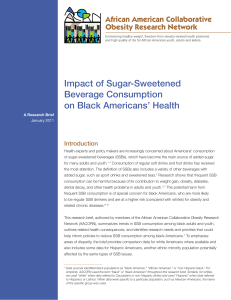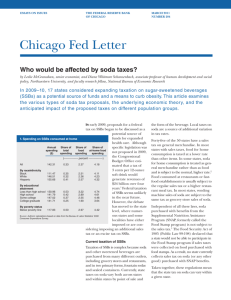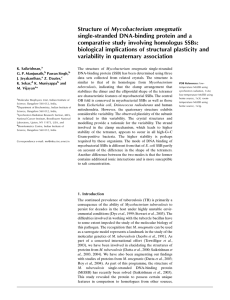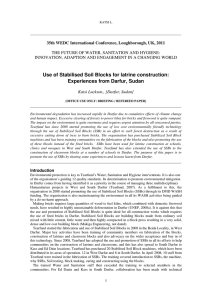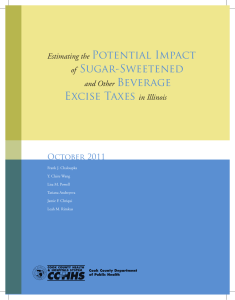Reducing Over-Consumption of Sugar Sweetened Beverages
advertisement
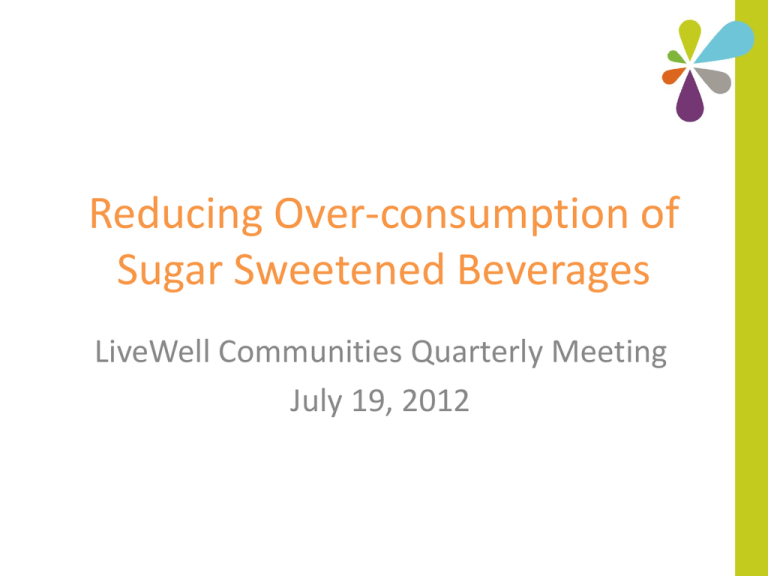
Reducing Over-consumption of Sugar Sweetened Beverages LiveWell Communities Quarterly Meeting July 19, 2012 What is the beverage environment at your worksite? Free SSBs regularly available Free SSBs offered at events or meetings SSBs available in vending SSBs available in other food service Safe drinking water is readily available Pricing differential strategies Placement strategies Messaging strategies 2 Objectives for Today 1. Establish a common baseline understanding of SSBs and Obesity 2. Begin to determine how we address SSB over-consumption collectively Agenda Overview of SSB and Obesity – Definitions, data, goals – Recommended strategies Table Talk: discuss current and potential policy and environmental interventions Group Discussion: develop a menu and discuss how to move forward 4 Definition Sugar-sweetened beverage include all beverages containing added caloric sweeteners, including, but not limited to, sugar- or otherwise calorically sweetened regular sodas, less than 100 percent fruit drinks, energy drinks, sports drinks, and readyto-drink teas and coffees. Source: Institute of Medicine SSBs and the Obesity Epidemic SSB’s link to obesity is stronger than that of any other food or beverage SSBs are the single largest contributor of calories and added-sugar in the American diet SSBs account for at least 20% of weight increase in US from 1997 to 2007 SSB consumption is poorly compensated for by reduced intake from other sources Habitual nature of consumption of SSBs suggests persistence into adulthood Source: Institute of Medicine citations in Accelerating Progress to Obesity Prevention Who consumes the most? On a given day, among youth aged 2-19 – 70% males – 40% females Highest among blacks Consumption goes down as income goes up Source: Institute of Medicine citations in Accelerating Progress to Obesity Prevention 7 How SSBs Became a Leading Contributor to Obesity Marketing Portion Size Price Product Availability Source: KicktheCan.com, California Center for Public Health Advocacy Source: Todd Putman, The Future Pull Group 9 Our Goal Reduce over-consumption of sugar-sweetened beverages in the places we live work, learn and play by ensuring that healthy beverage options are the routine, easy choice 10 IOM Strategy 2-1 Adopt policies and implement practices to reduce over-consumption of sugar-sweetened beverages – Access to SSBs in public places and schools – Access to water – Pricing strategies and fiscal policies – Social marketing campaigns – Role of health care providers Source: Accelerating Progress in Obesity Prevention, IOM, 2012 11 CDC’s Recommended Strategies 1. Ensure ready access to potable drinking water 2. Limit access to SSBs 3. Promote access to and consumption of more healthful alternatives to SSBs 4. Limit marketing of SSBs and minimize marketing’s impact on children 5. Implement differential pricing of SSBs 6. Include screening and counseling regarding SSB consumption within routine medical care 7. Expand knowledge and skills of medical care providers to conduct screening & counseling Source: The CDC Guide to Strategies for Reducing the Consumption of Sugar-Sweetened Beverages , 2010 12 Rudd Center’s Policy Options Procurement Access to fresh drinking water Eliminate marketing to children Education Healthy Defaults Portion Control Sales/Promotions Taxes or permits Zoning Source: Yale Rudd Center for Food Policy and Obesity 13 Boston Public Health’s Toolkit Use Media to promote healthy drinks and tap water; restrict sugarsweetened beverage advertising and employ counter-advertising on the health effects of sugar-sweetened beverage consumption. Increase Access to healthy drinks and tap water; reduce the availability of unhealthy drinks. This can be accomplished in retail venues, vending machines, cafeterias, meetings, and more. Use of Point of decision labeling or signage to discourage consumption of sugar-sweetened beverages and promote healthier choices and to give consumers nutrition information about their choices. Use Price to discourage consumption of unhealthy drinks and to make it easier to buy healthy drinks like seltzer and bottled water by making these healthy choices relatively cheaper. Use Social support/services to promote increased activity at the workplace as part of a comprehensive plan to a healthier workplace. Source: Boston Public Health Commission 14 Colorado Highlights CDPHE’s SSB National Trends & Policies Report LWC Community-Based Social Marketing pilot LW Community Panel – Colorado Springs – Mina Liebert – Fort Collins – Virginia Clark – Prowers County – Susan Portner 15 Table Talk Everyone shares 1. Efforts your coalition has undertaken/plans to undertake to reduce SSB consumption (explicit or integrated into other strategies) 2. SSB intervention you’d like to see in your community Table selects 2-3 “interventions” for consideration 16 Group Discussion Which of the interventions would you consider pursuing in your community? What do you need to move forward? 17
